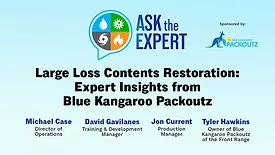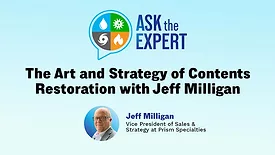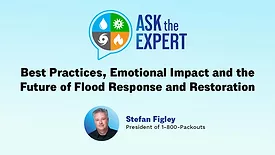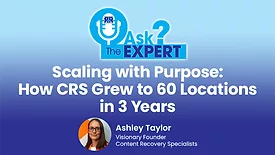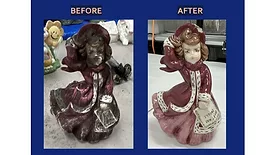Home » Keywords: » contents cleaning
Items Tagged with 'contents cleaning'
ARTICLES
Ask Annissa
Why liability releases, inventories and chain of custody are critical for restoration contractors
Read More
Ask the Expert
Large Loss Contents Restoration: Expert Insights from Blue Kangaroo Packoutz
Learn how the Blue Kangaroo Packoutz team tackles large loss contents restoration, from triage to documentation, with proven strategies and scalable solutions.
Read More
The Human Side of Contents Restoration: Extending Comfort, Empathy and Hope after Disasters
Contents restoration is about more than recovery. It’s about healing, empathy and emotional support.
Read More
Ask the Expert
The Art and Strategy of Contents Restoration with Jeff Milligan
Jeff Milligan Shares Expert Tips on Contents Restoration and Emotional Care
Read More
Ask the Expert
Best Practices, Emotional Impact and the Future of Flood Response and Restoration
Stefan Figley shares flood response insights, the emotional impact and the future of restoration strategies
Read More
Ask the Expert
Scaling with Purpose: How CRS Grew to 60 Locations in 3 Years
Ashley Taylor shares CRS’s rapid growth and vision for the future of contents restoration
Read More
After catastrophic fire, homeowners have treasured collection restored by 1-800-Packouts of Southeast Massachusetts
Ceramic Keepsakes Saved from Soot After Fire Thanks to 1-800-Packouts of Southeast Massachusetts
May 30, 2025
Following devastating fire, Aurora family has precious memories preserved by 1-800-Packouts of Northern Illinois
1-800-Packouts Helps an Illinois Family Preserve Memories After a Devastating House Fire
May 29, 2025
Ask the Expert
Contents Restoration: What You Need to Know
Expert insights on challenges, innovations and strategies shaping the contents restoration industry
Read More
Stay ahead of the curve with our newsletters.
Get the latest industry updates tailored your way.
JOIN TODAY!Copyright ©2025. All Rights Reserved BNP Media.
Design, CMS, Hosting & Web Development :: ePublishing


